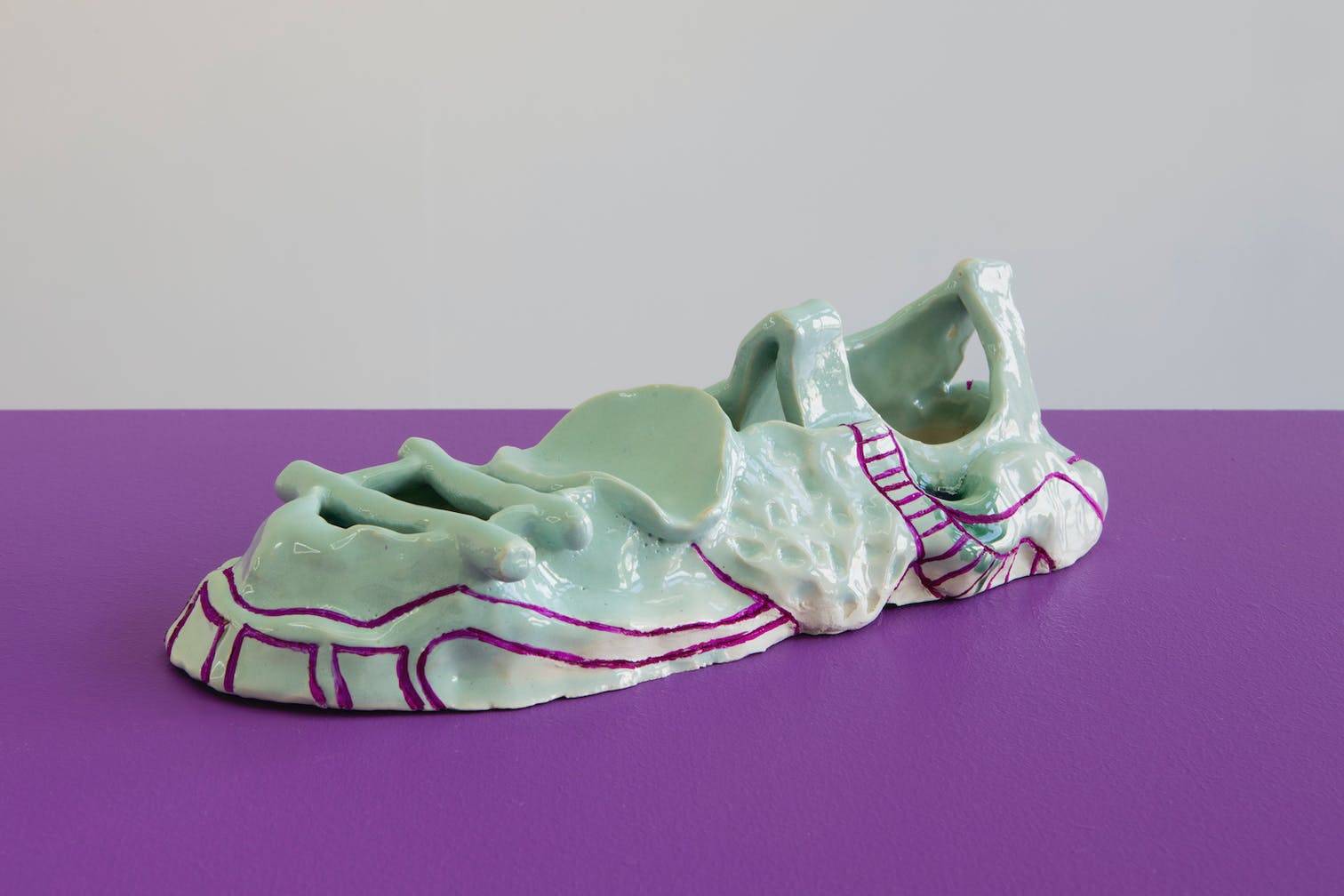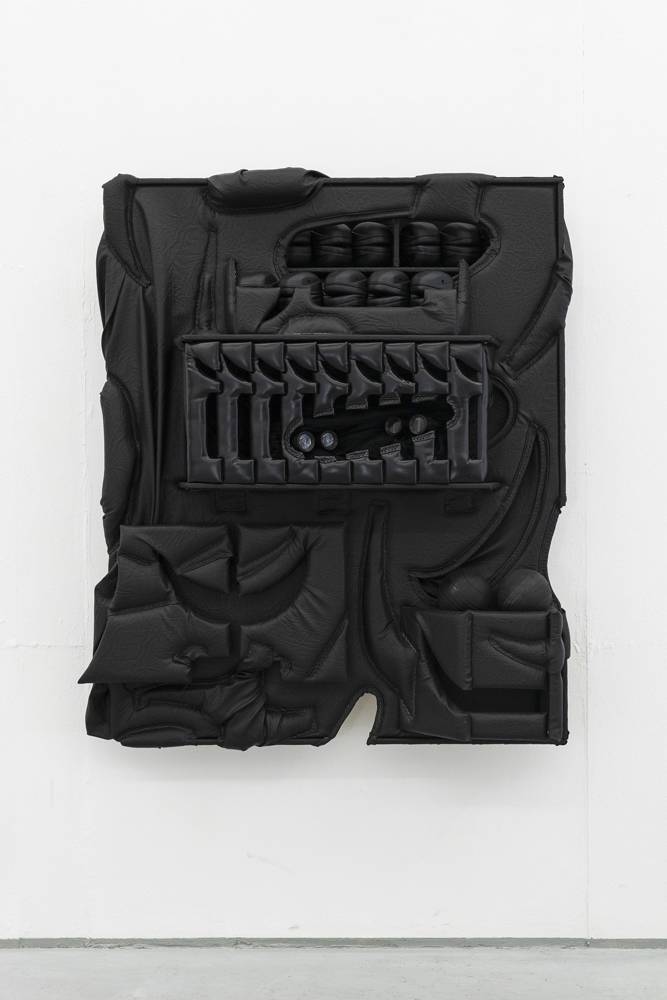
19
Paris Internationale: 5 artists spotted at the contemporary art fair
Founded in 2015 on the sidelines of the FIAC to defend emerging galleries and artists, the Paris Internationale fair inaugurated its 7th edition on Wednesday, October 20. After a previous proposal that took over the ground floor of a former supermarket, the fair is returning to its fundamentals and taking up residence in a private mansion in the 16th arrondissement of Paris, offering a space to each of the 36 participating galleries – including 20 newcomers. Focus on five artists discovered on site.
Published on October 19, 2021. Updated on May 31, 2024.
1. Hamish Chapman’s Fragmented Bodies
A brown clip lost in a blonde hair, the corner of an azure blue eye or the back of a pierced ear… Framed in close-up, the canvases of the British non-binary artist Hamish Chapman are fragments of his own body, which is revealed through its details and the different elements that, culturally, define the genre. The works thus form a composite self-portrait where the pink skin, treated with small repetitive brushstrokes, gives an almost disturbing textural effect. In some of them, a tennis court appears in the background, as a metaphor for the binary where the two genders compete and pass the buck.
Kendal Koppe’s stand (Glasgow).

2. Michael Portnoy’s kitschy ceramic sneakers
Whether it is through his past as a dancer and stand-up comedian or his present as a visual artist and videographer, Michael Portnoy transmits his passion for human habits and behaviors. On the stand of the Wilfried Lentz gallery, the 50-year-old American presents a series of ceramics where we recognize the deliquescent silhouettes of sneakers embellished with colorful laces. Called URGENT, these deliberately kitsch – not to say ugly – pieces with their garish tones and flabby shapes make fun of the triviality of trends as well as the commercial and symbolic value acquired by these shoes over the last two decades. Alongside these sculptures on pedestals, an i-Pad broadcasts the video Progressive Touch, where the artist stages performers in a purple and intimate setting around the same challenge: how to make love in rhythm and orchestrate the fusion of one’s body with music?
Wilfried Lentz’s stand (Rotterdam).
3. Haydeh Ayazi’s Cynical and Phantasmagorical Landscapes
Although Haydeh Ayazi has been painting for about twenty years, his entry into the art world is relatively late. At the age of 65, the Iranian artist is beginning to achieve international recognition, notably through the Delgosha gallery present for this new edition of Paris Internationale. On paper and canvas, the artist depicts colourful phantasmagoria mixing fantastic animals, divine figures, aliens and characters in traditional costumes. His childlike representations of bodies, his two-dimensional vision of space as well as the myriads of dots or calligraphy words in Arabic that dot his backgrounds like motifs could make his style akin to naïve art or even outsider art. But behind this joyful visual proliferation emerge cynical comments on contemporary society, from the endangerment of animal species by global warming to the violent political repression of citizen uprisings.
Delgosha Stand (Tehran).

4. The disturbing bas-reliefs of Cezary Poniatowski
“Sardonic bas-reliefs upholstered in black faux leather”. This is how Cezary Poniatowski describes his sculptures, two of which he is presenting on the stand of the Stereo gallery. The young Polish artist, who first cut his teeth in painting, has been creating assemblages inspired by simplified domestic elements in rectangular volumes for several years, which the faux leather attached to the stapler covers like artificial skin. The result is a kind of monochrome abstract collage, most often black or brown, floating between the reassuring aspect of their padded forms and the anguish of their dark colour, which plunges the viewer into the deep meanders of material everyday life.
Stereo stand (Warsaw).

5. Alex Bag’s Scathing Parodies
Since her youth, Alex Bag has been obsessed with television, as much by its shows, its aesthetics as by its unbreakable link with consumer society. In her videos made in the 1990s and 2000s, the American artist questions the aura of this medium of image and information, as well as mass culture, by embodying characters – stars of music videos, documentaries or commercials – emblematic of the television stereotypes of their time. Presented by the Von Ammon Co gallery alongside Tony Hope’s paintings in a room that looks like a teenager’s bedroom, these films are accompanied by morbid dolls dressed in miniature Martin Margiela ensembles, through which the fifty-year-old warns of the dangers of suicide among young people.
Von Ammon Co booth (Washington DC).
















